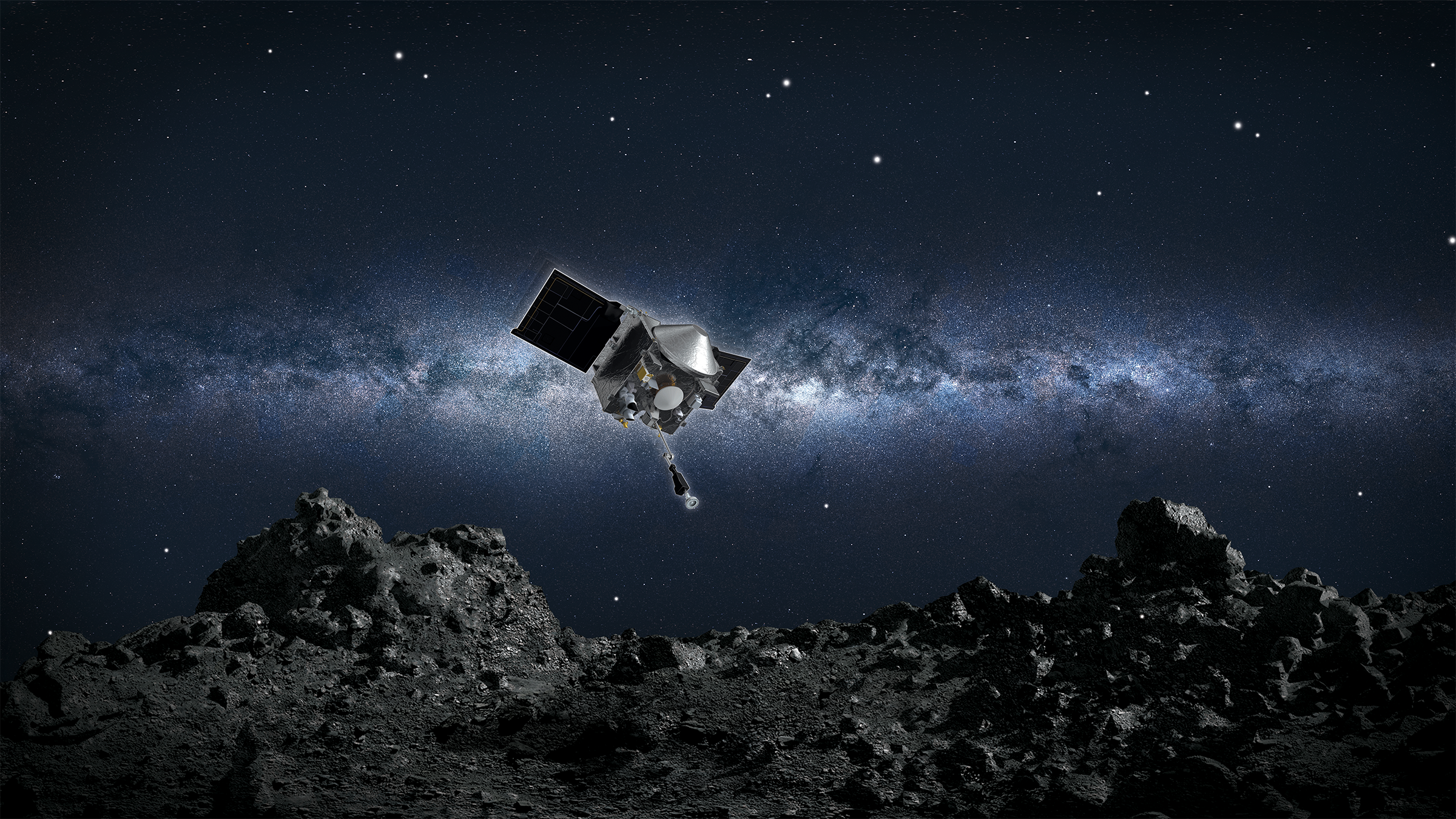NASA's OSIRIS-REx mission almost bit the dust — then Queen guitarist Brian May stepped in
The OSIRIS-REx spacecraft will soon return to Earth. What's on board could reveal the extraterrestrial origins of life on Earth.

On Sept. 24, NASA's OSIRIS-REx spacecraft will come hurtling back through Earth's atmosphere after a years-long journey to Bennu, a "potentially hazardous asteroid" with a 1 in 2700 chance of smashing cataclysmically into Earth, the highest odds of any identified space object.
The goal of the mission? To see whether life on Earth came from outer space. But for a nail-biting 22 months, scientists wondered whether they'd be able to land the spacecraft on the asteroid at all.
That the mission ultimately succeeded is in part due to Queen guitarist Brian May, who meticulously created 3D images of the rubble pile to help the mission leaders identify safe landing spots. Thanks to that safe landing, OSIRIS-REx is now returning from its mission with a 2-ounce sample (60 grams) of Bennu's surface that could contain extraterrestrial precursors to life on our planet.
"You think asteroids are pieces of junk out there that might hit us and we're very scared of them — whatever. You don't realize that actually, they're probably responsible for us being here," May, who also has a PhD in astrophysics told Live Science. "There would probably be no biosphere without asteroids. And possibly the actual seeds of life came from them as well — it's an incredible thought. So asteroids become absolutely the center of everything: If we understand asteroids, we'll understand ourselves."
Bennu: Bringer of death, God of creation
Viewed from a distance, Bennu looks like an inert, debris-flecked spinning top suspended in space. Categorized as a rubble-pile asteroid, Bennu is an 85.5 million-ton (77.5 million metric tons) collection of rock chunks and boulders barely held together by weak gravity — a cosmic ball pit that swallows any object that lands too hard on its surface, and sends anything that springs too forcefully from it careering into space.
Yet draw closer, as OSIRIS-REx did on its first approach in 2018, and an altogether stranger picture emerges. Veins of carbonate rock 3 feet (0.9 meters) long criss-cross a surface spattered with carbon-rich organic material — evidence that Bennu's parent body, a 60-mile (96 kilometers) wide object which formed during the earliest years of the solar system and split roughly one billion years ago to form the asteroid, was once home to torrents of hot water and the earliest building blocks of life.
Bennu is named after an ancient Egyptian god of creation, and the flight of OSIRIS-REx (short for the Origins, Spectral Interpretation, Resource Identification, Security-Regolith Explorer) to the asteroid was no less mythic an odyssey. It blasted off from Florida in 2016 and slingshotted around Earth before reaching Bennu's orbit in December 2018.
Sticking the landing
However, OSIRIS-REx didn't just need to get to Bennu: the real trick was landing. Initial thermal surveys of Bennu appeared to suggest it was composed of fine-grained material, much like a beach, according to the mission leader Dante Lauretta, a professor of planetary science and cosmochemistry at the University of Arizona.
But when OSIRIS-REx finally arrived, it encountered a craggy asteroid strewn with sharp boulders that rendered the original landing strategy, which depended on a height-measuring laser altimeter, completely useless. Instead, the team nudged the spacecraft into a tight orbit using Bennu's feeble gravity — making thousands of passes over the rock's surface to search for a safe landing spot.
"Yeah, we were challenged to find a safe location on the asteroid to send our billion dollar spacecraft down to collect a sample," Lauretta told Live Science. "I mean, this is not an easy decision, and it was my decision, right? I was on the hook for this."






















